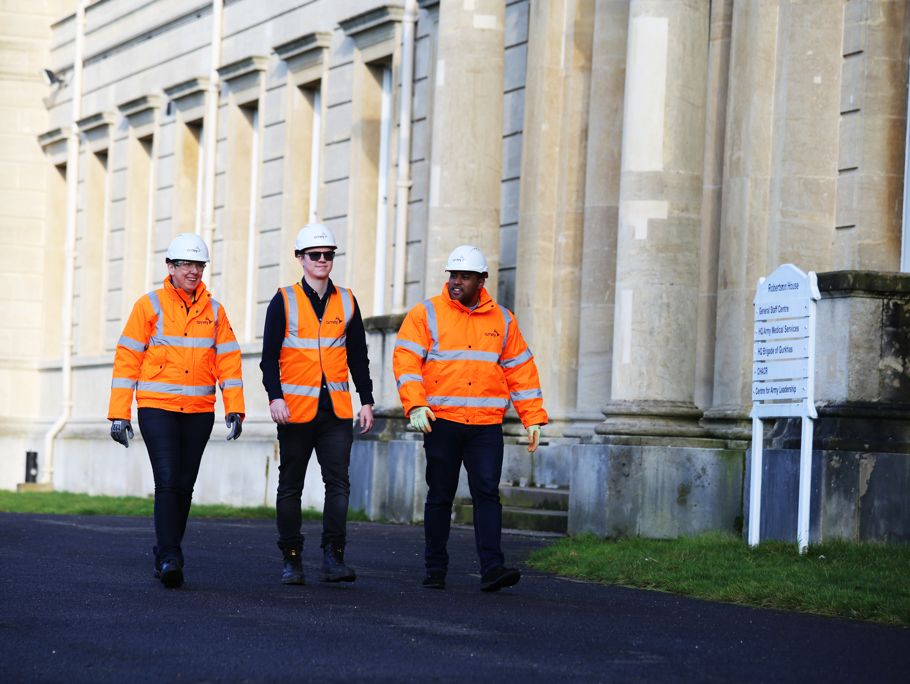The challenge
We provided critical response maintenance, estate compliance and project investment under the four regional prime contracts as well as maintaining 49,500 homes for Service personnel and their families under the National Housing Prime contract.
The Defence estate was constructed from 1917 onwards, and as a result, the Defence Infrastructure Organisation (DIO) wanted to ensure that their built and housing estates were operating in safe and compliant conditions (including meeting necessary building fabric compliance requirements).
The use of reinforced autoclaved aerated concrete (RAAC) was used from 1950 onward, and as we know the lightweight construction material was only ever given a design lifespan of about 30 years.
The DIO were keen to understand the potential scale of RAAC in their estate and recognised that Amey possessed the relevant skills and expertise to assist.
Amey’s response
Amey’s in-house consultancy division are experts in working with public sector clients to plan and undertake compliance activities, audits, and incident records. This service ensures that both Amey and our clients’ businesses remain contractually and legally compliant. Our dedicated technical auditors conduct regular reviews and evaluations of systems and processes, ensuring adherence to established standards, regulatory requirements, and industry best practices.
The DIO engaged with Amey to understand how the 3existing facilities management teams could support with the assessment of their built and housing estates. We undertook an initial desk study to identify buildings of potential concern - based on extensive research into construction dates, form of construction, and building use. We then undertook visual inspections and sampling activities to test for the presence of RAAC.
Once the findings were analysed, reports and recommendations were provided with a clear route to rectification. Each report was signed off by a Chartered Engineer
